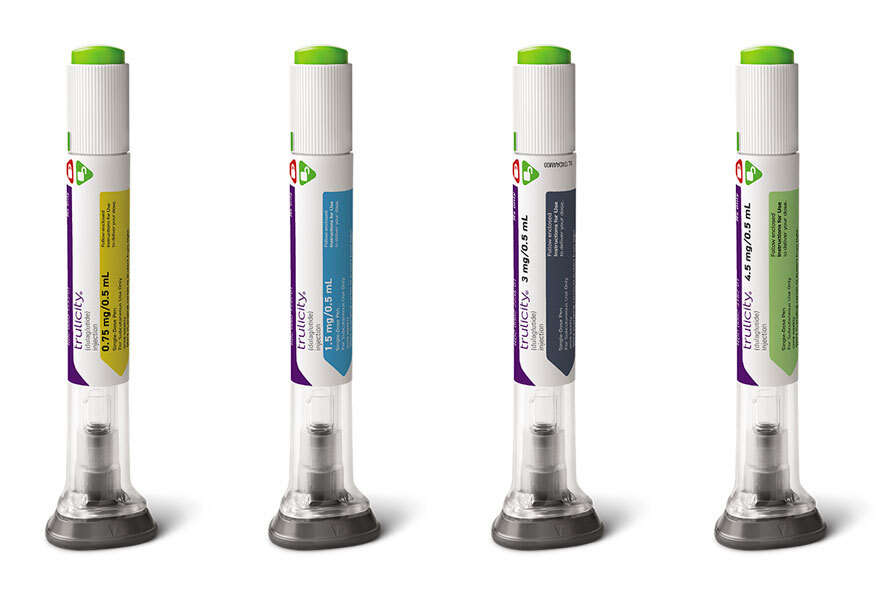The Trulicity dose plays a crucial role in managing Type 2 diabetes effectively. As a medication designed to help control blood sugar levels, Trulicity has specific dosage recommendations based on individual needs. Understanding your Trulicity dose can significantly improve your overall health and diabetes management.
In this article, we’ll cover everything you need to know about the Trulicity dose, how it’s prescribed, and why finding the right dosage is essential for managing Type 2 diabetes. Let’s dive into the details.
What is Trulicity?
Before we discuss the Trulicity dose, it’s essential to understand what Trulicity is. Trulicity (dulaglutide) is an injectable medication prescribed for individuals with Type 2 diabetes. It works by helping the pancreas release insulin when blood sugar levels are high, which helps control glucose levels in the body.
Trulicity is used in combination with diet and exercise to improve blood sugar control. It is a long-term treatment option for managing diabetes and reducing the risks of complications like heart disease.
Importance of Finding the Right Trulicity Dose
Getting the correct Trulicity dose is essential for effective diabetes management. While Trulicity can be a powerful tool for controlling blood sugar, taking too much or too little may either lead to side effects or insufficient blood sugar control.
The dosage of Trulicity is typically personalized to each patient. Health professionals consider factors like your current blood sugar levels, weight, and overall health to determine the best Trulicity dose for you. Always consult with your healthcare provider to find the right balance.
Common Trulicity Dose Options
1. Initial Trulicity Dose
For those starting out on Trulicity, the initial Trulicity dose is usually 0.75 mg, taken once a week. This starting dose helps the body adjust to the medication gradually, reducing the risk of side effects like nausea or digestive issues.
2. Maintenance Trulicity Dose
After a few weeks on the initial dosage, your healthcare provider may increase your Trulicity dose to 1.5 mg weekly, which is the most common maintenance dose. This dosage is often recommended for long-term diabetes management and offers better control of blood sugar levels.
3. Higher Trulicity Dose Options
For individuals who require stronger blood sugar control, healthcare providers may prescribe higher doses, such as 3 mg or even 4.5 mg, depending on how well you respond to the medication. Adjusting the Trulicity dose is usually based on ongoing blood sugar monitoring and your overall health.
How to Take Trulicity: Dosage Guidelines
The Trulicity dose is administered as a weekly injection, and it’s essential to follow the prescribed schedule to ensure the medication’s effectiveness. Here are some key guidelines for taking Trulicity:
- Timing: Trulicity should be injected once a week, on the same day each week. It can be taken with or without food.
- Injection site: The injection is typically given in the stomach, thigh, or upper arm. Rotate injection sites to avoid irritation.
- Storage: Store Trulicity in the refrigerator, and do not freeze it. Before injecting, allow it to reach room temperature for about 30 minutes.

What to Expect from Your Trulicity Dose
Blood Sugar Control
Once you start taking your Trulicity dose, you should see gradual improvements in your blood sugar levels. Most patients report significant reductions in their A1C levels (a measure of average blood sugar over three months) after using Trulicity for a few weeks.
Weight Management
One of the added benefits of the correct Trulicity dose is potential weight loss. Many individuals using Trulicity notice a decrease in appetite, which can lead to weight loss. This is particularly beneficial for those who are overweight or obese, as losing weight can further improve diabetes control.
Potential Side Effects
While Trulicity is generally well-tolerated, some people may experience side effects, especially when adjusting to a new Trulicity. Common side effects include nausea, indigestion, and fatigue. If these symptoms persist, consult your healthcare provider to discuss adjusting your dose.
Monitoring and Adjusting Your Trulicity Dose
Regular monitoring is vital when using Trulicity. Your healthcare provider will likely schedule follow-up appointments to check your blood sugar levels and determine if your Trulicity needs adjustment.
Signs You May Need a Dose Adjustment
- Persistent High Blood Sugar: If your blood sugar remains high even after several weeks of using the recommended Trulicity dose, your healthcare provider may suggest increasing your dose.
- Low Blood Sugar (Hypoglycemia): On the other hand, if you experience low blood sugar frequently, your dose may be too high. Adjustments may involve reducing your Trulicity or changing other medications you are taking.
- Side Effects: If side effects become too bothersome, a lower Trulicity may be recommended.
Benefits of Sticking to Your Trulicity Dose
Consistency with your Trulicity dose is key to seeing long-term results. By sticking to your prescribed dosage, you’ll enjoy:
- Better blood sugar control: With regular doses, you can prevent spikes and crashes in your blood sugar.
- Improved overall health: Consistent use of Trulicity helps protect against diabetes-related complications like heart disease and kidney damage.
- Sustained weight loss: Following your Trulicity routine can also help with gradual weight loss, improving your overall quality of life.
Consulting with a Healthcare Professional
It’s essential to consult a healthcare professional when determining your Trulicity. Diabetes management is highly individualized, and your healthcare provider will work with you to tailor a treatment plan that fits your unique needs.
If you have questions or concerns about your dosage or are experiencing side effects, don’t hesitate to seek advice.
Conclusion: Managing Your Trulicity Dose for Optimal Health
The Trulicity is a vital part of managing Type 2 diabetes and improving your health. By following the correct dosage, monitoring your blood sugar levels, and consulting with your healthcare provider, you can take control of your diabetes and live a healthier life.
